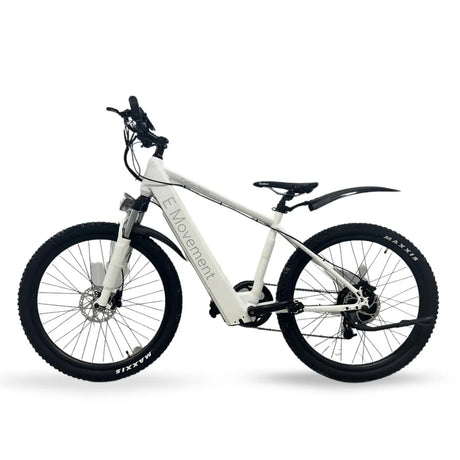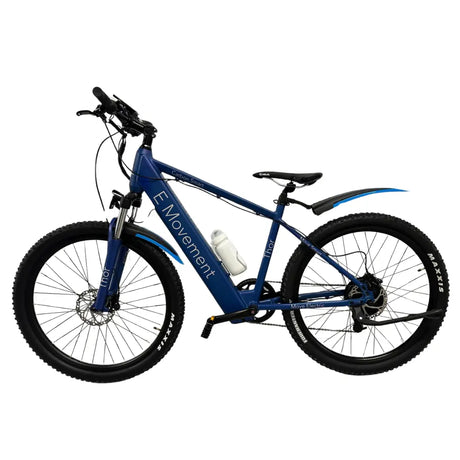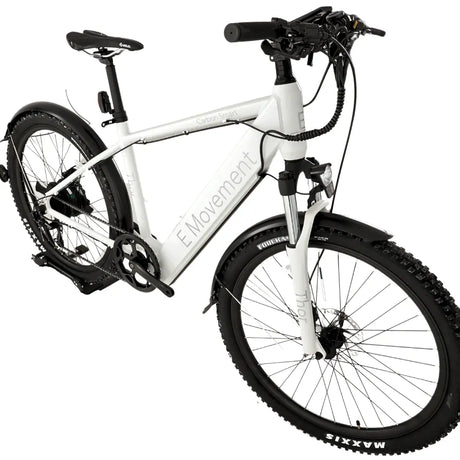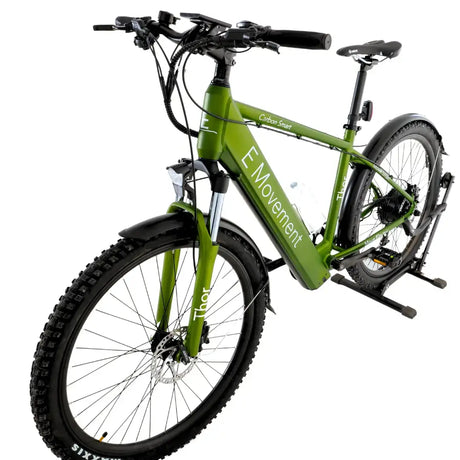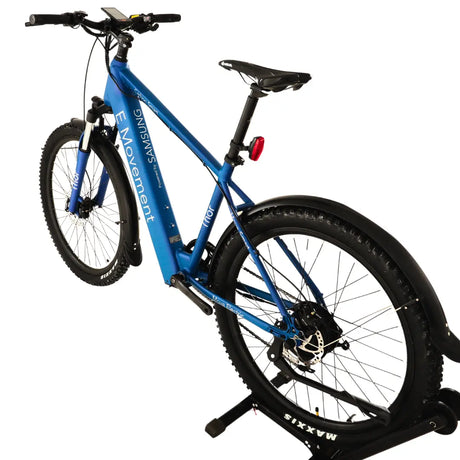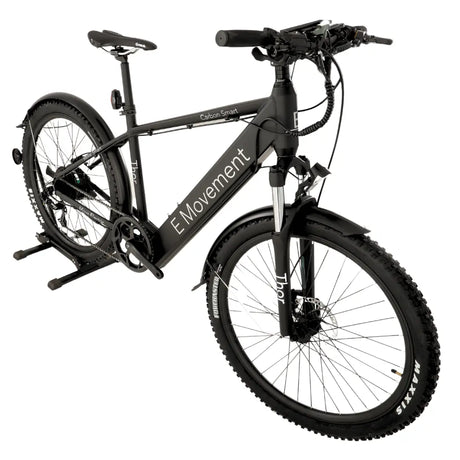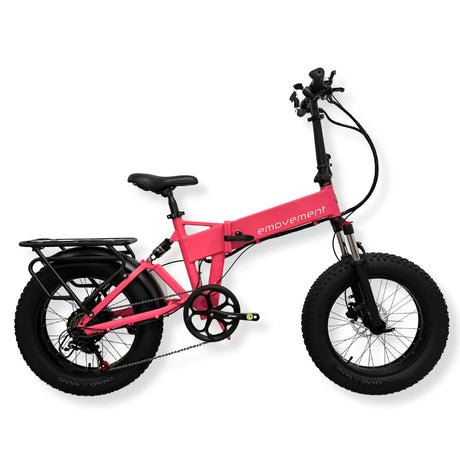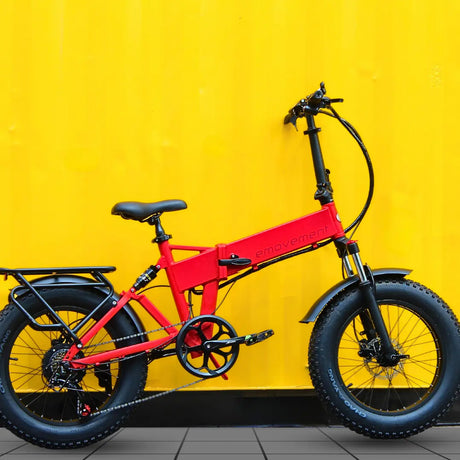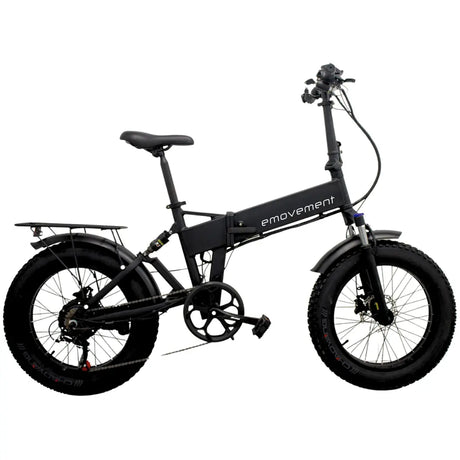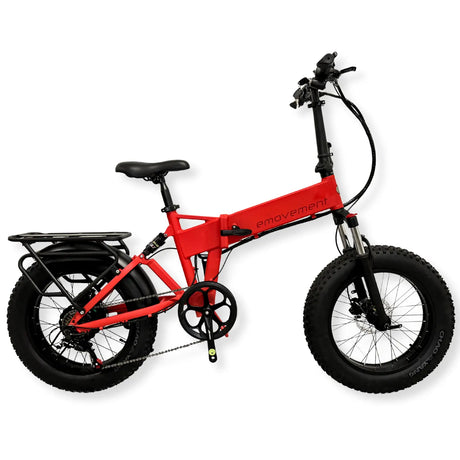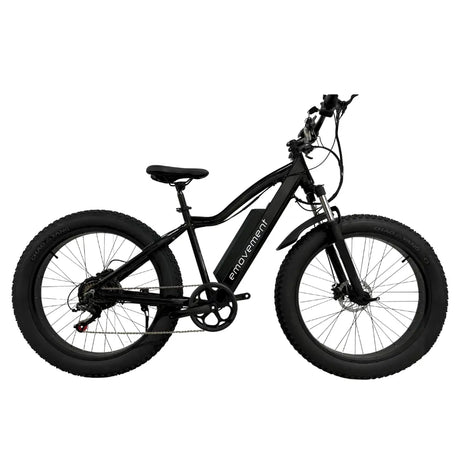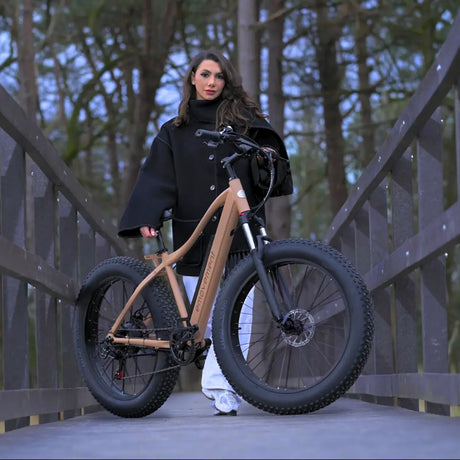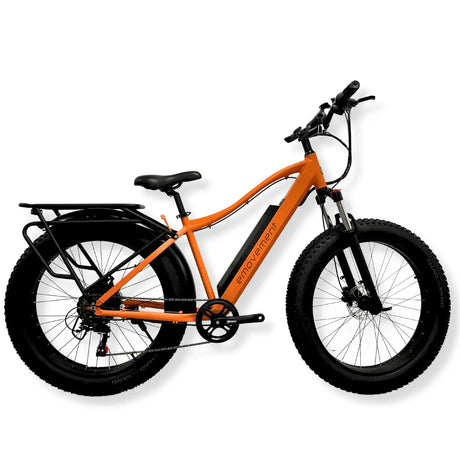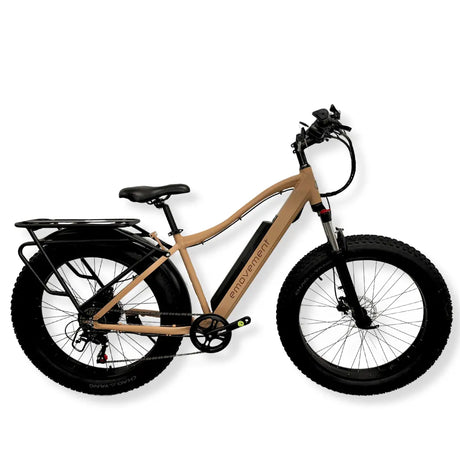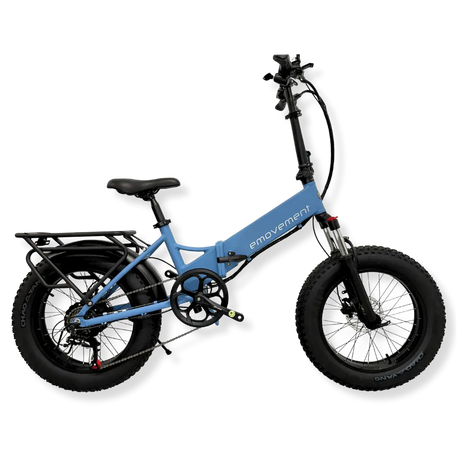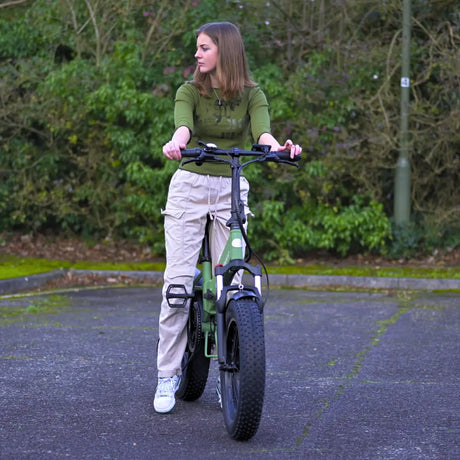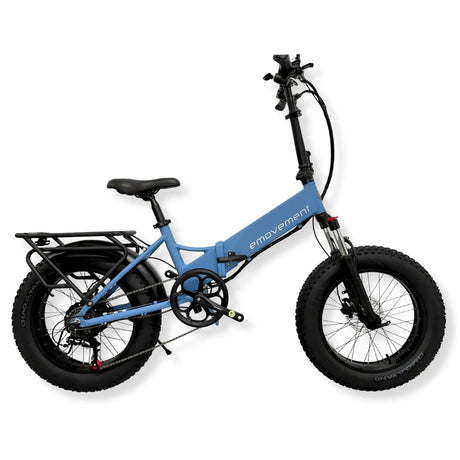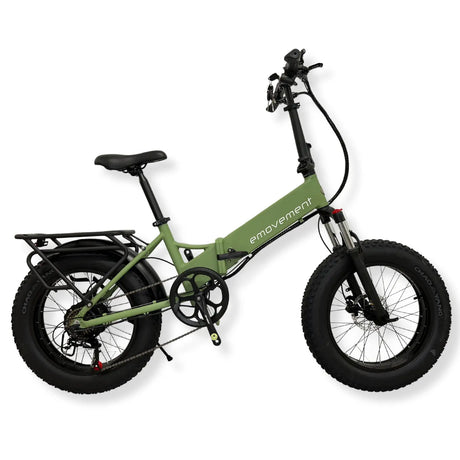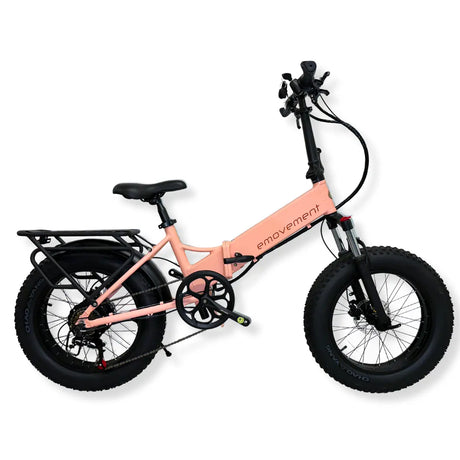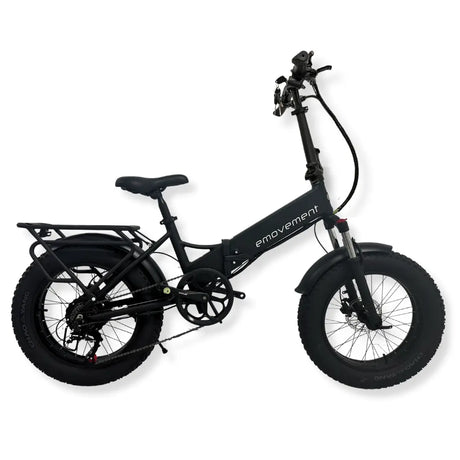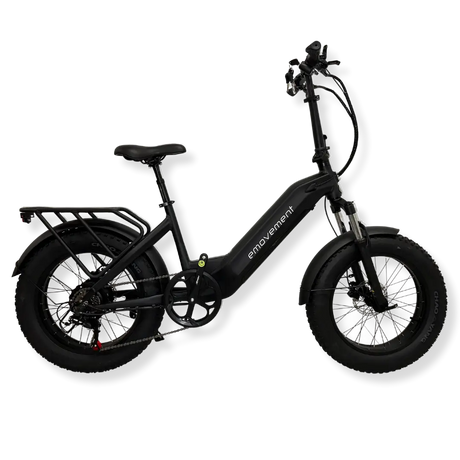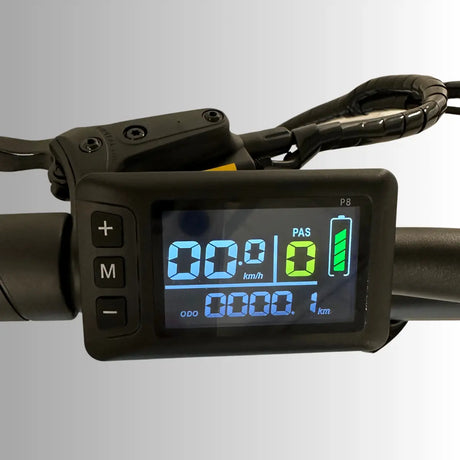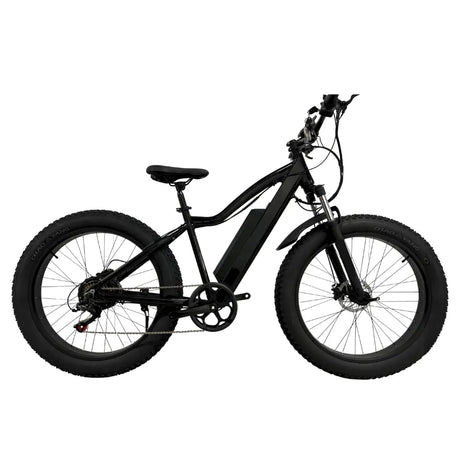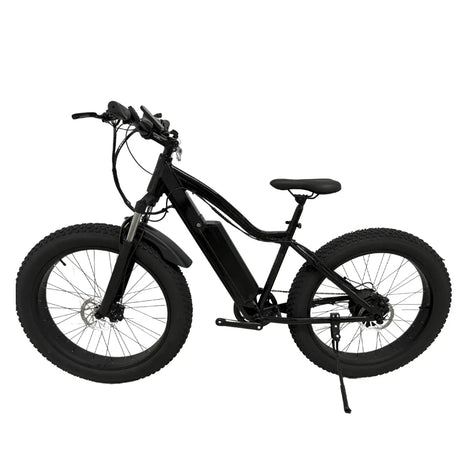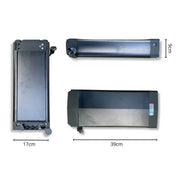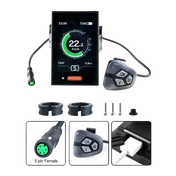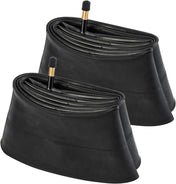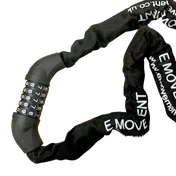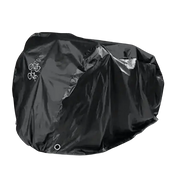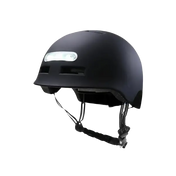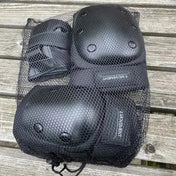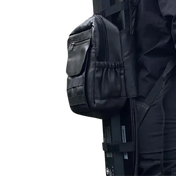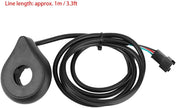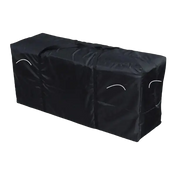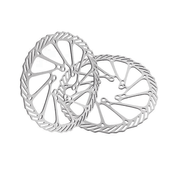Winter, in the UK, can bring some extra challenges for electric bike owners. The cold, moisture, road salt, and grit can damage an e-bike if you don’t take care of it properly. Batteries can be less efficient in freezing weather, components are more vulnerable to corrosion, while tyres need additional TLC to make sure they give the right grip in wet or icy conditions. All of this makes many riders wonder: Are electric bikes high maintenance in winter?
The answer greatly depends upon the design and build quality of the e-bike. Some will need to be serviced and adjusted more often than others, though, which is why it pays to work with a brand like eMovement that designs its scooters for longevity. E Movement e-bikes are designed to handle rough weather with low maintenance through features like sealed electronics, quality hydraulic disc brakes, puncture-resistant tyres and durable aluminium frames. However, with a few electric bike winter care practices—like storing your battery correctly, cleaning it regularly and checking your tyre pressure—you can continue enjoying your e-bike efficiently over the colder months.
In this blog, we are going to cover the key e-bike winter maintenance tasks, how to avoid common pitfalls such as battery and tyre problems, and how e-bikes have been built for winter and their ease of maintenance, providing UK customers with a better experience for their winter riding.
Maintenance Tips for Ebikes During Winter
E bike Winter keep-up will require a little extra care for electric bikes to ensure they continue to be efficient, safe and long-lasting. The battery, tyres, motor, and braking system are just a few of the components that are affected by colder temperatures, moisture, and road conditions. If you do all the right things, your e bike will keep rolling into the winter. To get you started, here are five must-do maintenance tasks:
Battery Care in Cold Weather
An e-bike has a battery, which is the most sensitive part when winter arrives. Cold temperatures affect the performance of the battery, which can cause range loss and, in certain cases, permanent damage if not managed correctly.
-
Storage: Always keep batteries indoors when not in use and ideally somewhere dry with a temperature between 10 – 20 degrees Celsius. If you have a removable battery on your e-bike, always remove and store it separately.
-
Charge with Care: Do not attempt to charge and/or operate a frozen device or battery, as doing so will lead to internal damage. Always let it warm to room temperature before plugging it in through. Charging in very cold conditions can also lead to inefficient charging cycles, shortening battery life.
-
Battery Insulators: If the ride is cold to very cold, you might want to use a battery insulator cover to help retain heat.
E-movement's e-bikes; namely the Thor 350W and the Raven, have Samsung or Panasonic cells at the heart of the battery pack rather than lower quality cells found in many other less expensive batteries are designed to last longer -- preventing premature winter death.
You Are Responsible for Tire Pressure and Grip
Tyres tend to lose pressure faster in cold weather, and reduced tyre pressure can affect handling and provide less traction on slick roads.
Since cold temperatures lower tyre pressure, it’s good practice to check and inflate your tyres more often during winter months. Tires that aren’t sufficiently inflated can impact stability and efficiency.
Pick up a wider, deep-treaded tyre to grip well on icy and wet ground. For example, fat tyre e-bikes such as the Panther V4. 2 and Thunder V4. They're also more stable in winter conditions because of their all-terrain, puncture-resistant tyres.
Sealing the Motor and Drivetrain
Winter road conditions — slush, salt and humidity — can wear down an e-bike’s motor and drivetrain faster.
If you ride in wet or salted conditions, use a bike-specific degreaser to clean your drivetrain so it does not rust. Over time salt can build up and cause components to fail.
Apply a winter-grade wet lubricant to the chain and gears to help it run smoothly. Wet lubricants are also generally a better choice than dry lubricants, as they can help protect against moisture and grime.
Moreover, seal proof enclosure of the motor. The IP65 rating which Hunter Extreme and Troy Pro have, protects better from rain and splashes as IP65 stands for dust-tightness and protection against water projections.
Brake System Maintenance
Your braking system is your most critical safety equipment, but winter conditions can impact your ability to stop quickly and safely.
Rain and grit can get on the disc, reducing stopping power. Regularly wipe brake rotors and pads to prevent build-up.
Make sure that there is no wear on your brake pads, which are worn down in winter riding. Hydraulic disc brakes are easier to care for while also providing better stopping power than mechanical brakes.
Frame and Components Protection
In colder environments, corrosive properties from winter can cause frame and other visible component wear.
Road salt can eat away at your e-bike’s frame and moving parts. After riding, rinse your bike with clean water and dry it well to prevent rust.
Spray on a silicone-based protector to provide extra protection against moisture and dirt.
Wiring can sometimes be affected by hot and wet conditions. Keep all connectors dry and look for bare wiring.
With these basic winter maintenance tips for electric bikes, you can extend the longevity of your e bike and have comfortable, safe rides even through winter. With top-quality components and durability, e movement’s e-bikes need less frequent servicing than other high-maintenance electric bikes, so they’re a great option for year-round riding.
Do E-Bikes Need More Maintenance Than Traditional Bikes in Winter?
Whether wet, icy or muddy winter bike maintenance is essential for all bikes, especially in the UK. Some believe e bike maintenance in winter is a daunting task, but with advances in battery technology, sealed motors and durable frames, they are just as reliable — if not more so — than traditional bikes in the cold. Here’s how e-bikes compare:
Battery and Electrical Components: Winterized
Like other electrical devices, e-bikes are powered by lithium-ion batteries, which are solid performers in the winter with the right care. All about e-movement: Thor 350W and Panther V4 2 have built-integrated, removable batteries that can then be stored on the premises to help keep them working. Rated IP65 against dust and water, they’re safe from rain and snow; and though there’s no battery, traditional bicycles need extra lubrication to prevent components from rusting when exposed to the elements.
Weight and Stability: E-Bikes Have More Grip
The extra weight of e-bikes can increase traction on slippery roads, in contrast to lightweight road bikes, which can slide. Aries and Thunder V4 models are fitted with fat tyres for better traction, making them safer in winter conditions. Traditional bikes can be under-stable on wet or slushy surfaces, given their lightness.
Mechanical Parts: E-Bikes Have Less Wear
Hydraulic disc brakes on the more powerful e-bikes, like the Troy Pro and Pixie, provide superior stopping power during wet conditions. Their motor assist reduces wear on the drivetrain so fewer e bike repairs in cold weather are required. In contrast, conventional bikes must be lubricated and cleaned regularly; winter muck can wreak havoc on mechanical components.
Cost vs. Convenience: E-Bikes Save Time
Although e-bikes cost more at the point of purchase, winter maintenance is usually simpler. Sealed motors and electronic shifting systems need little attention, and the pedal-assist modes (the Hunter Extreme has them) decrease rider fatigue when the temperatures drop. Traditional bikes, while less costly, will require frequent cleaning and brake adjustments, plus lubrication of the chain, in winter.
E-Bikes: Making Winter Riding Effortless
E-bikes make winter riding more approachable and simple due to their pedal-assist feature. E-movement's Commute model is also a good choice for cold-weather commuting, thanks to built-in lights, mudguards, and an ergonomic design. Traditional bikes can provide exercise but also push you to your limits in difficult environments, which can lead to avoidance through the winter.
E-bikes do not need more maintenance than standard bicycles—they only need different maintenance. Sealed electrical systems, added stability, and built-in features, make them a low-maintenance, safe and efficient option for winter riding. In reality, the e-bike, with less stress on the mechanical parts and more capable of handling rugged stains, would be the better all-rounder.
Other Winter E-Bike Issues and How to Avoid Them
Winter's exposure can bring a range of problems for e bikes, but there are ways to prevent these. Find here how to maintain e bikes in winter.
Loss of Traction due to Slippery Surfaces
Problem: Riding on snow, ice, and wet roads is more slippery than average and can be more dangerous due to loss of grip on the surface.
Solution: The key to cross-hemisphere performance will be to buy winter-only tyres with deep treads. When conditions are really bad, use tyre chains or spiked tyres. Reducing tyre pressure a shade adds surface area with the ground, so you have a bit more grip on slippery roads.
Freezing Lock Mechanisms
Problem: Locks (especially mechanical locks) are prone to freezing in very low temperatures, making your lock useless and your bike vulnerable to petty criminals.
Solution: Ensure to use graphite lubricant inside the keyhole and internal mechanisms, to avoid them freezing. Opt for waterproof locks or weather-resistant varieties that can hold up to the weather conditions. If possible, to keep the chance of the lock freezing to a minimum, store the bike indoors in a warm climate.
Problems with LCD and Electronics
Problem: Very low temperatures can make electronic components like displays, controllers, and sensors not work or be less responsive.
Solution: Keep your electric bike in a heated area or use insulated coverings for sensitive parts (like the Bafang DPC 18 display in the Thor 350W). Check all connections to be secure and clean electrical components regularly to prevent buildup that may interfere with system performance. Protect the display screens from moisture; after riding through rain or snow, wipe it dry.
Performance of Struggling Suspension
Problem: A suspension system hardens when the temperatures drop.
Solution: Spray suspension components with cold-resistant oil that won’t gum up during colder temperatures. If your bike has coil spring suspension, consider swapping it out for air suspension systems, as they are generally known to perform better in the cold. Inspect the suspension pressure often and confirm it’s tuned for lower temps, incorrect numbers mean harder impact.
Reduced Motor Efficiency
Problem: This can lead to reduced power and sluggish performance in subzero temperatures.
Solution: Keep the motor clean and dry. Moisture can corrode and hinder the operation of the motor. Similarly, store the bike indoors in a warm, dry area when not in use, particularly in the case of bikes with integrated batteries and motors, such as the Hunter Extreme. Inspect the motor housing for leaks or damage that might allow moisture in and impact performance.
Conclusion
Do electric bikes require maintenance in winter? Yes! However, it doesn’t have to be a difficult task. All it takes is a few simple steps— check the battery health regularly, adjust the tyre pressure, protect electrical components from moisture, and keep your brakes and suspension systems maintained. Make e bike storage in winter in a dry, warm place and using winter-proof tyres can do wonders.
With these proactive measures, you guarantee hassle-free rides no matter how harsh the conditions are – making your e-bike the perfect companion regardless of the weather.


